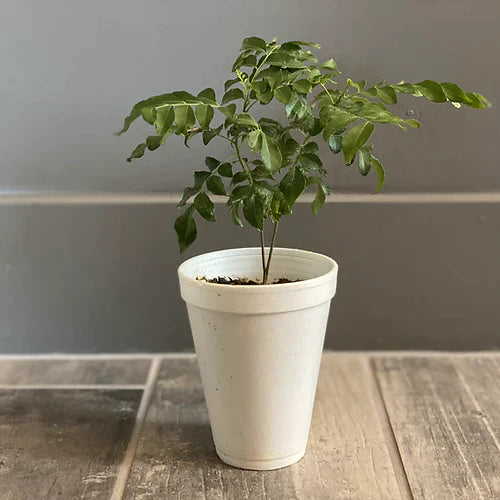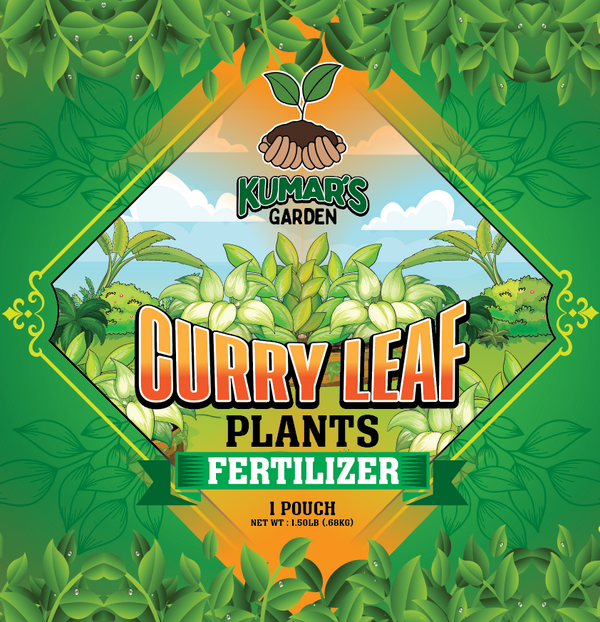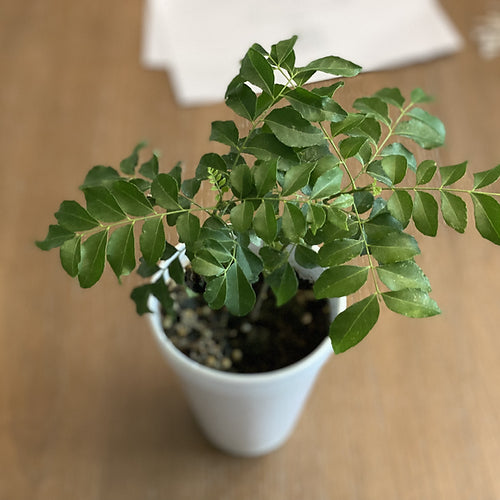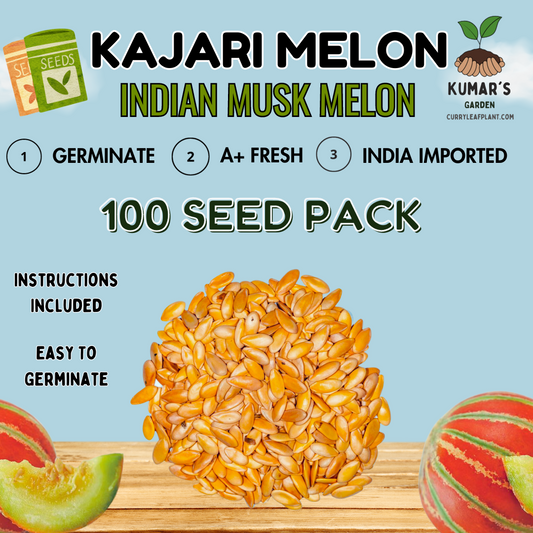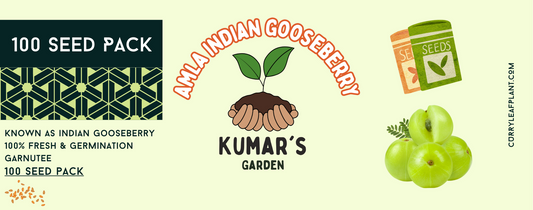Propagating Amla (Indian Gooseberry) from seed to sapling is a rewarding and fulfilling process that allows you to witness the growth and development of this valuable fruit-bearing tree. Whether you're a gardening enthusiast or a commercial grower, understanding the key steps involved in propagating Amla seeds is essential for successful cultivation. In this comprehensive guide, we'll explore the process of choosing the right Amla seeds, germinating them, and caring for the seedlings to ensure healthy and robust Amla plants.
Key Takeaways
- Selecting high-quality Amla seeds is crucial for successful propagation.
- Creating an optimal germination environment is essential for the successful sprouting of Amla seeds.
- Maintaining consistent moisture levels during germination is key to the successful growth of Amla seedlings.
- Providing adequate sunlight and warmth is essential for nurturing healthy Amla seedlings.
- Regular monitoring and care are necessary to ensure the successful development of Amla seedlings into robust saplings.
Choosing the Right Amla Seeds

Understanding Amla Seed Varieties
Selecting the appropriate Amla seed variety is crucial for successful propagation. Different varieties offer varying levels of hardiness, growth rates, and fruit qualities. Here are some common varieties:
- Banarasi: Known for its high yield and sweet fruit.
- Chakaiya: Valued for its medicinal properties and tart flavor.
- NA-7: A hybrid variety that is disease-resistant and provides consistent fruit quality.
Climate and soil conditions should influence your choice, as some varieties thrive better in specific environments. It's important to research the characteristics of each variety to match your local conditions for optimal growth.
When starting with Amla propagation, consider the end use of the fruit—whether for consumption, medicinal use, or ornamental purposes—as this will guide your variety selection.
Sourcing High-Quality Amla Seeds
Once you understand the different varieties of Amla seeds, the next crucial step is to source them from a reputable supplier. High-quality seeds are pivotal to the success of your Amla propagation journey. Look for suppliers with positive reviews and a track record of providing viable seeds.
Authenticity is key when selecting your Amla seeds. Avoid seeds that have been treated with chemicals as they may hinder germination. Organic and heirloom seeds are often the best choices for healthy, robust plants.
Ensure that the seeds are fresh and have been stored properly to maintain their viability.
Here's a checklist to help you source the best seeds:
- Verify the supplier's credibility and reputation.
- Check for certifications and organic labels.
- Inquire about the seed's origin and harvest date.
- Ask about the germination rate of the seeds.
- Purchase a small batch first to test germination rates.
Germinating Amla Seeds

Preparing the Germination Environment
To kickstart the germination process, creating the right environment is crucial. Consistent warmth and humidity are the pillars of a successful germination environment for Amla seeds.
Temperature plays a pivotal role in awakening the seeds from dormancy. Aim for a steady range between 20°C to 25°C (68°F to 77°F). Here's how you can maintain these conditions:
- Use a heat mat to provide bottom warmth.
- Cover the seeds with a plastic dome or wrap to retain moisture.
- Keep the setup in a location that receives indirect sunlight.
Ensure the soil is well-draining and rich in organic matter. A mix of sand, perlite, and compost can provide the ideal texture and nutrients for Amla seeds to thrive.
Remember, patience is key. Amla seeds may take several weeks to germinate, so don't be discouraged by a lack of immediate progress.
Methods for Germinating Amla Seeds
Once you have your amla seeds prepared, it's time to initiate the germination process. Soak the seeds in water for 12 hours to soften the outer shell and promote sprouting. After soaking, there are several methods you can employ to germinate your seeds:
- Paper Towel Method: Wrap the seeds in a damp paper towel, place them in a plastic bag, and keep them in a warm area.
- Soil Method: Plant the seeds in a pot with rich, well-draining soil and cover lightly with more soil.
- Sand Method: Sow the seeds in a bed of clean, coarse sand to prevent soil-borne diseases.
Consistency in moisture and temperature is key to successful germination. Avoid letting the seeds dry out or become waterlogged.
Once the seeds have sprouted, it's crucial to transfer them to a more suitable growing medium. The transition from germination to sapling is delicate, so handle the young plants with care to avoid damaging the tender roots.
Caring for Amla Seedlings
Optimal Growing Conditions
To ensure the healthy growth of Amla seedlings, providing the optimal growing conditions is crucial. Amla plants thrive in warm climates with plenty of sunlight. However, they also require protection from the scorching midday sun, which can be achieved by using shade nets or placing them in partial shade.
Temperature and humidity play a significant role in the development of Amla seedlings. They prefer a temperature range of 20-30 degrees Celsius and moderate humidity. Ensuring good air circulation is also important to prevent fungal diseases.
Consistent watering is key to maintaining moist soil, but be careful not to overwater as Amla does not tolerate waterlogged conditions.
- Ensure soil is well-draining and fertile
- Maintain soil pH between 6.0 to 7.5
- Apply a balanced fertilizer every 4-6 weeks
By adhering to these conditions, your Amla seedlings will have the best chance to grow into strong and productive plants.
Nurturing Amla Seedlings
Once your amla seedlings have sprouted, it's crucial to provide consistent care to ensure they develop into healthy saplings. Regular watering is essential, but avoid waterlogging as it can lead to root rot. A balance must be struck to maintain moist soil conditions without over-saturating.
Amla seedlings thrive in a nutrient-rich substrate. Incorporate organic compost into the soil to promote robust growth.
Monitor the seedlings for signs of pests or diseases. Early detection and treatment can prevent more serious issues. Here's a simple care checklist for your amla seedlings:
- Ensure adequate sunlight; amla plants love the sun but appreciate some afternoon shade in hotter climates.
- Maintain soil pH between 6.5 and 7.5.
- Fertilize lightly every 4-6 weeks with a balanced, organic fertilizer.
- Protect from strong winds and extreme temperatures.
As the seedlings grow, be prepared to transplant them to larger pots or directly into the ground, giving them ample space to expand. With patience and attentive care, your amla seedlings will flourish into fruitful saplings.
Conclusion
In conclusion, propagating Amla from seed to sapling is a rewarding and fulfilling process that allows you to grow your own Amla plant and enjoy its numerous health benefits. With the right knowledge and care, you can successfully grow Amla from seed and witness the growth of a healthy Amla sapling. Whether you're a gardening enthusiast or someone interested in sustainable living, propagating Amla is a wonderful way to connect with nature and cultivate a valuable plant in your own space.
Frequently Asked Questions
What are the different varieties of Amla seeds and how do they differ?
Amla seeds come in various varieties, each with unique characteristics such as size, color, and taste. Some varieties may be better suited for specific growing conditions or purposes.
Where can I find high-quality Amla seeds for propagation?
High-quality Amla seeds can be sourced from reputable nurseries, online seed suppliers, or botanical gardens. One choice is from Kumar's Garden. It's important to ensure that the seeds are fresh and viable for successful germination.
What is the optimal germination environment for Amla seeds?
Amla seeds require a warm and moist environment for germination. Providing consistent moisture and a temperature range of 25-30°C (77-86°F) can enhance germination success.
What are the recommended methods for germinating Amla seeds?
Common methods for germinating Amla seeds include the use of seedling trays, paper towel germination, and direct sowing in well-draining soil. Each method has its advantages and can be chosen based on individual preferences and resources.
What are the optimal growing conditions for Amla seedlings?
Amla seedlings thrive in well-draining soil, ample sunlight, and regular watering. Maintaining a warm and humid environment can promote healthy growth and development.
How can I nurture Amla seedlings to ensure their healthy growth?
Nurturing Amla seedlings involves providing balanced nutrition, protecting them from pests and diseases, and gradually acclimating them to outdoor conditions. Regular monitoring and care are essential for the successful development of Amla seedlings.



